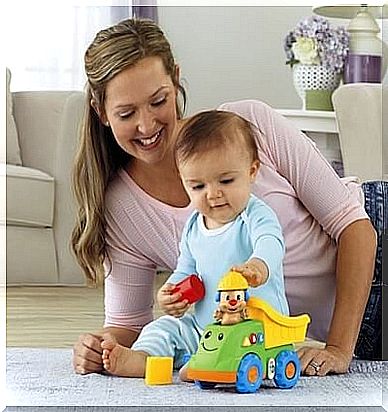What Is “Mamitis ” And How Can You Deal With It?

If your child is around two years old, they probably will not be away from you. Every time you can not be together, there will be a drama. If you experience this situation, your baby is going through a phase which in Spanish is called “mamitis”. Do you know what it is?
What is mamitis?
We can say that a child has mamitis when they have the physical autonomy to be able to move around freely, yet they are constantly looking for mother and can not cope if they are separated from her.
They do this even though they may be with others they trust.
Babies cannot defend themselves and they need protection from their parents. Especially in the first months. Mothers become the world of their babies, their figure.
But as the baby grows and gains new skills, they need less help and be more independent.

When does mamitis occur?
The peak of mamitis is usually between 10-18 months of age. During this phase, children become more self-aware and independent.
This means they can already walk, run and move around. Their main purpose is to explore the world around them, always accompanied by their mother.
The next phase occurs a little later, specifically between 2 and 3 years of age. Babies begin to interact, both with their world and the people who live in it. This includes meeting many new people. They will feel comfortable if their mother is around to give them security.
Finally, the third stage of mamitis occurs between the ages of 4 and 5 years. During this phase, they want to do everything with their mother. Go shopping with mom, cook with mom…. it’s a kind of “crush” on their mother.
Psychoanalytic theory has called this phenomenon mamitis.
In addition to these stages of mamitis that all children go through, there are certain moments where they may even experience a relapse of the mamitis period.
This happens when they become insecure where they cling to their mother to restore inner stability.
There are many factors that can lead to situations of excessive attachment to the mother. Some of these reasons are due to the growth cycle they go through. Others are for other reasons such as illness or jealousy, if they e.g. gets a new sibling.
The good news is that this is usually only temporary and that it is easy to fix.
What can we do to deal with acute mamitis?
The solution is simple: patience and lots of common sense.
We should help them regain their confidence. This will allow them to feel comfortable with others.
It is also very important that they learn to be alone with dad or with their grandparents, so we should give them time to be with other people.
First, they can try to do pleasant things like play or read stories. After a few days, they will feel comfortable with other routine activities.
The best way to build your child’s independence at a young age is to play.
We can start playing with our kids with colored balls, puzzles or something that we know they like. Once entertained, we can get up and walk a few inches away. Later we can walk a meter away.
We must constantly keep in touch with them so they know we are nearby. It is simply a matter of love and a lot of patience.

What we should never do…
During this phase, fathers also suffer. It is difficult for them that the child will only be with their mother. We must understand that at these ages, they are not aware that it can hurt fathers’ feelings.
They still have not developed empathy. In other words, they can not put themselves in the shoes of others. It is only with mother that everything is easier.
We should not think that our children are deliberately rejecting other people as they go through these phases. We should be understanding for family members, grandparents who may feel hurt.
Finally, we must be aware that the establishment of a strong, comfortable and good bond between mother and child, provides the optimal development of the child for the rest of their lives.









